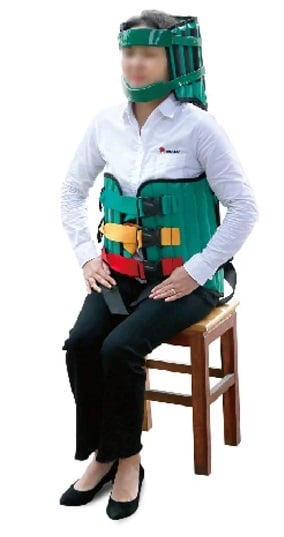In emergency rescue scenarios, the KED Extrication Device (KED) plays an important role as a first aid tool. In this article, we will discuss the features and benefits of the KED extrication device and provide a detailed guide to its proper use.
Features of the KED Extrication Device:
Adjustable Design: The KED extrication device has multiple adjustable straps to accommodate different patient body sizes and ensure proper support.
Sturdy Material: Made of sturdy material, the fixation plate has enough rigidity to effectively support the head, neck and spine, protecting the patient from further injury.
Lightweight and Portable: The lightweight design makes it easy for first responders to carry and use, ensuring a quick response in an emergency and reducing rescue time.
Cleanable Surface: The surface of the KED rescue device is easy to clean, helping to maintain hygiene, especially for responding to complex environments such as car accidents.
Advantages of the KED Rescue Device:
Rapid Immobilisation: The design of the KED extrication device allows first responders to quickly and accurately immobilise the patient's head, neck and spine, preventing further movement that could cause injury.
Full Support: With its multi-strap adjustable design, the KED Extrication Device provides full support for the head, neck and spine, providing optimal stability and ensuring that the patient is fully protected during the emergency.
Wide range of applications: Suitable for a variety of emergency rescue scenarios, especially car accidents, falls and other situations that may lead to spinal injuries, providing first responders with a versatile and effective tool.
Improve Rescue Efficiency: The use of the KED extrication device not only ensures the safety of the patient, but also improves the efficiency of the first aid team, enabling them to move the patient from the accident scene to the medical facility more quickly.
How to properly use a KED:
Assessing the patient: Before using a KED, first responders must thoroughly assess the patient's head, neck and spine to ensure that a KED is required.
Prepare the KED: Ensure that all parts of the KED are intact and ready for use.
Positioning the Patient: Lay the patient on a flat surface and ensure that the head, neck and spine are in a neutral position.
Secured Head and Neck: Adjust the straps of the KED Rescue Device to ensure that they are tightly and comfortably secured to the patient's head, neck and spine.
Immobilise Patient: Immobilise the patient's head, neck and spine using the multiple straps of the KED Rescue Device to ensure stability during transport.
Transferring the Patient: Transferring the patient to a stretcher or other means of transport, ensuring that the patient's head and neck continue to be stabilised throughout the process.
In summary, KEDs play a critical role in first aid rescue due to their unique design and advantages. The correct use of KED extrication device helps emergency personnel to better protect patients in emergency situations, improve rescue efficiency, and provide safer and more reliable rescue services for patients.